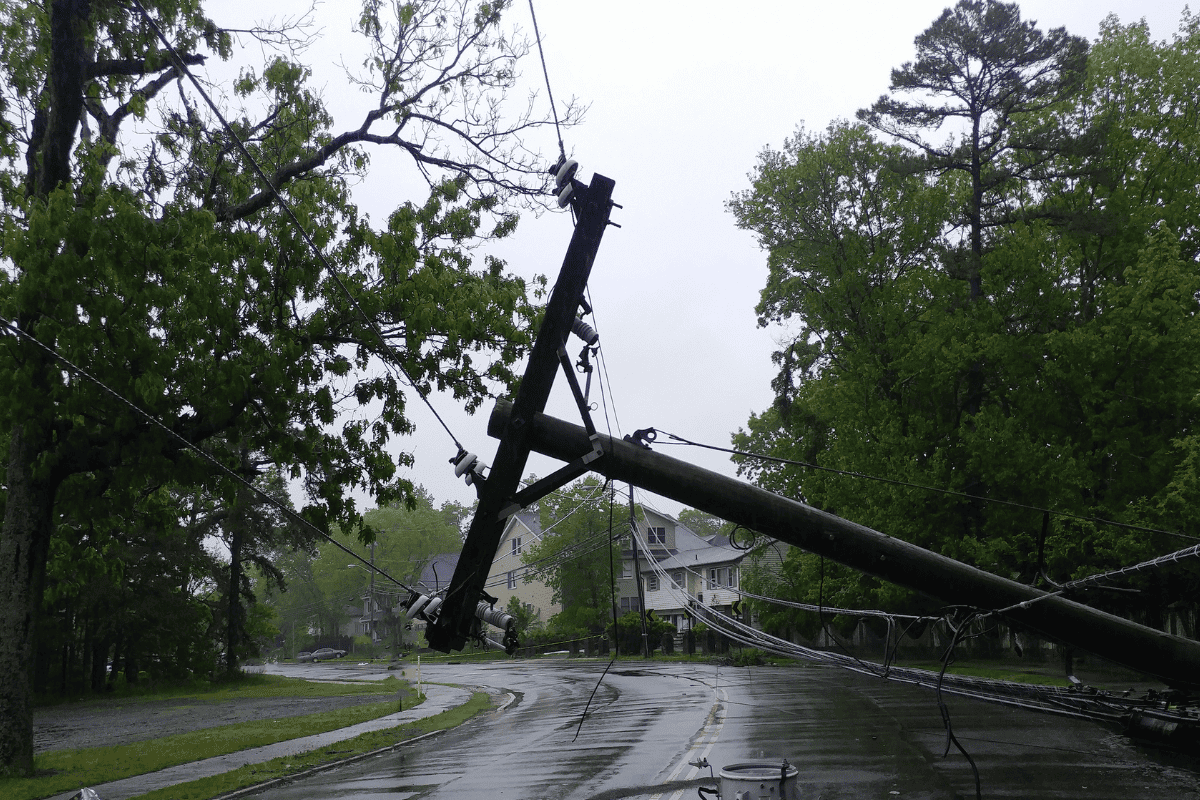Prepare now before disaster strikes.
The 2023 Atlantic hurricane season officially began on June 1. Luckily, the National Oceanic and Atmospheric Administration (NOAA) predicts a near-normal season, which runs through November 1. And so far, conditions have been unfavorable for storm formation.
Meanwhile, climate-related news coverage over the last two weeks has focused on smoke blanketing North America. The source of the smoke is distant wildfires raging across Canada, yet the impacts have extended deep into the United States, prompting air quality alerts about dangerous conditions everywhere from New York to North Carolina to Illinois.
This swirl of climate uncertainty serves as a stark reminder of the threats facing everyone in North America. It also highlights the importance of disaster preparation and the need to safeguard crucial business data.
In recent years, everyone has witnessed the devastating impact of hurricanes, tornados, floods, fires, and other natural disasters. When these catastrophes strike, communities are often left in turmoil and businesses struggle to recover.
That’s why disaster preparedness is so important. When companies take the time to assess their data backup, incident response, and business continuity plans, they can be ready to react when a disaster does strike. Here’s what CMIT Solutions recommends for businesses across North America:
- Strong data protection and disaster recovery protocols. In today’s digital age, data is the lifeblood of organizations. Protecting critical data from the potential ravages of a hurricane, fire, or other natural disaster is critical to ensure day-to-day business operations and maintain customer trust. Now’s the time to implement robust data protection strategies that include regular, remote, and redundant data backups; secure offsite storage; and cloud-based solutions with strong encryption measures. Actionable data recovery protocols that make swift restoration of systems easy are also a must. This minimizes downtime when disasters do occur.
- Business continuity plans that build resilience. Natural disasters can wreak havoc on businesses, leading to significant financial losses and operational disruptions. Good disaster preparedness measures should include comprehensive business continuity plans, which can help companies roll out alternate work arrangements, backup power systems, and step-by-step instructions for restoring normal workflows. Testing these plans in advance can make them easy to execute in the wake of a disaster, mitigating negative impacts on employees, customers, and stakeholders.
- Virtualization strategies that empower everyone to rebuild. In some cases, disasters are so bad that a company’s physical infrastructure may be damaged to the extent that no functioning machines are immediately available. Virtualization outlines which remote machines can be used to reinstate compromised data, with a key computer in an external location designated as a failsafe option in the case of significant damage. Since this is more of a worst-case scenario step, it often isn’t planned for or tested in advance. But you don’t want to wait until a disaster strikes to find out whether virtualization works or not—or how long it takes. Waiting just a few hours longer often means the difference between surviving a disaster and losing it all.
- Fortified IT infrastructure and communication networks. Effective disaster preparation also involves strengthening essential infrastructure and communication systems to withstand the impact of a hurricane, fire, flood, or other natural disaster. Governments, utility providers, and telecommunication companies ensure the resilience of power grids, water supply systems, and Internet connectivity. But disaster preparation is not the sole responsibility of large organizations. Smaller businesses often must go it alone for days or even weeks after a disaster—and those that are prepared in advance for prolonged service disruptions are often the ones who survive and thrive.
- Incident management for community collaboration and support.The worst disasters often bring out the best in people, requiring active participation and collaboration from individuals and groups within the community. In the business world, this is often referred to as incident management, or a plan for how different individuals will react in the face of certain types of disasters. When it comes to weather, there’s only so much that preparation can cover. Depending on your geographic location and the events your business has weathered in the past, good incident management plans will include defined roles and responsibilities for your employees so everyone knows what to do in the face of a disaster.
Building awareness now about disaster preparedness can help foster a culture of resilience in the future. Once your business takes the necessary steps to get ready, encourage those in your network to do the same. If you share resources and offer support before a disaster strikes, you’ll see a major difference in how those interconnected systems operate once a major event occurs.
As we brace ourselves for another hurricane season and turn a cautious eye toward other climate impacts, disaster preparation and data protection become even more important. Prioritizing the safety of individuals, implementing robust business continuity plans, safeguarding critical data, and strengthening infrastructure can enhance our resilience in the face of adversity.
Furthermore, fostering a sense of community and collaboration means that no one will be left behind during the disaster recovery process. Preparedness is not an option but a necessity—together we can weather the storm and emerge stronger than ever before.
No matter what threats your company faces, CMIT Solutions is ready to help. Our 250 independent offices in the United States and Canada have helped thousands of businesses respond to hurricanes, fires, floods, earthquakes, ice storms, pandemics, cyberattacks, and every incident in between.
The biggest lesson we’ve learned is that preparation is critical. The more time you spend prepping for a possible threat, the better off you’ll be when bad things happen. Contact CMIT Solutions today if you want to have data backup protocols and disaster recovery procedures in place before severe weather or summer storms strike.

